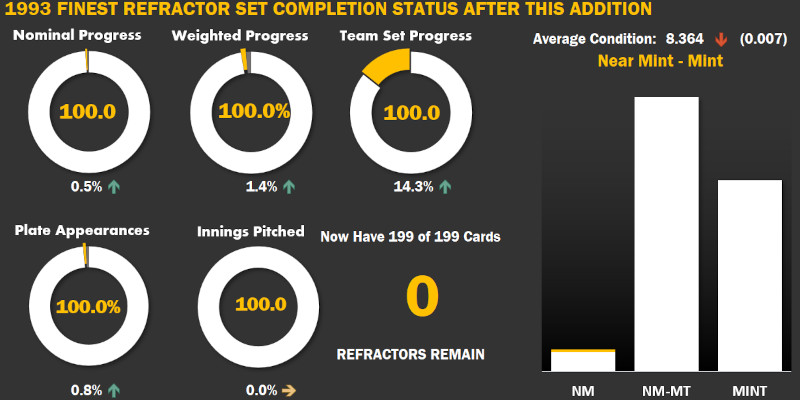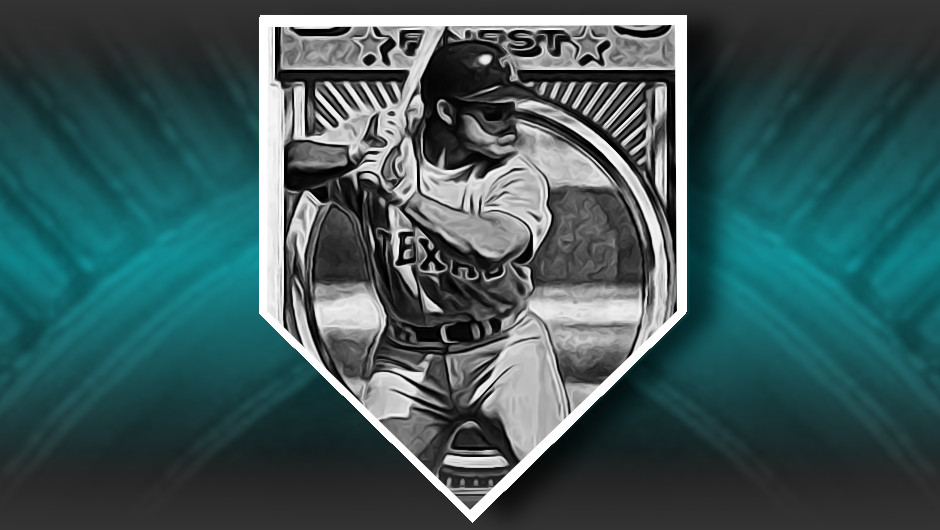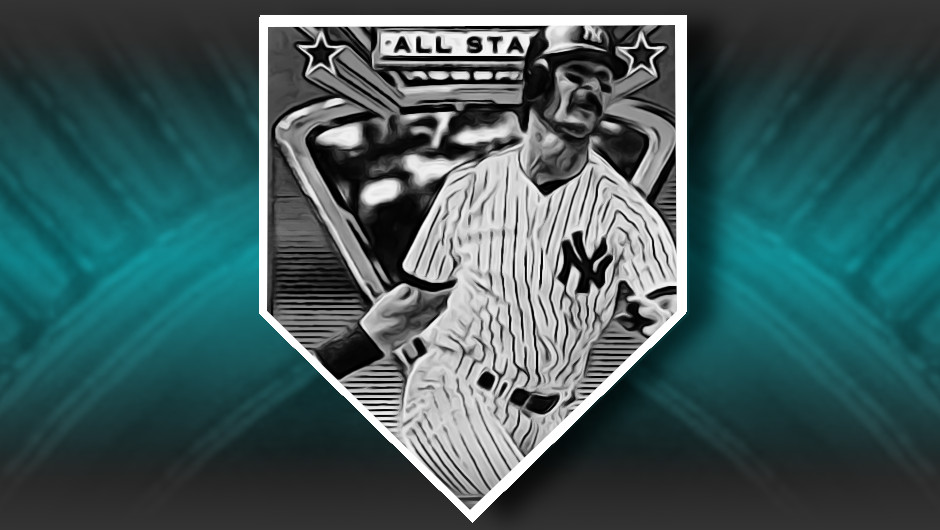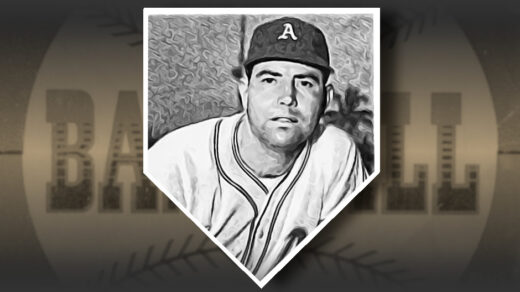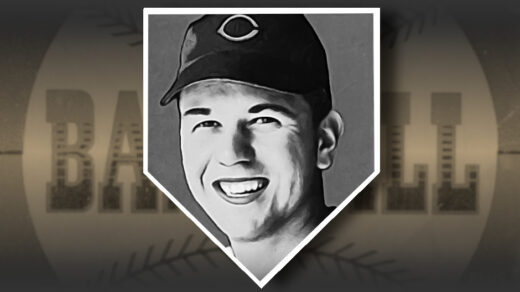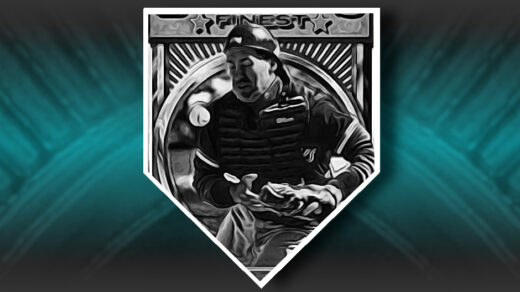The Pittsburgh Steelers are my favorite football team. The reason behind this selection is quite simple: I was bribed.
It started during the summer vacation in 1991. I had just returned from a road trip to visit family in West Virginia. I was a newly confident 9-year-old, having crushed it at a mall card show during that trip and deciding on my own to go into a barbershop and emerged with a brand-new flattop haircut. Back home, I walked into the local library and saw a banner for a summer reading competition. I quickly decided that I was going to be the big winner.
To win, you simply had to read the most books. My first inclination was to go find my favorite chapter book about a group of kids that solve the mystery of a supposedly haunted house, but as I picked it from the shelf, I realized I was never going to finish at the top of the leaderboard by getting just a single credit out of a 200-page book. Quantity would triumph over quality in this contest. I slotted the title back into the stacks and began looking for quicker reads.
I found what I was looking for in the juvenile non-fiction section. There I discovered our library had purchased a boxed set of books about football. Specifically, these titles consisted of individual books focused on each team in the NFL. None of these promised to be heavy reads and combined with a few more similar titles on race cars, promptly led to my discovery that local library cards had a 30-item limit. Didn’t they know I had a contest to win?
I read each and every one of those books. Their titles were duly recorded on my contest form and returned to the library well ahead of any family bankruptcy risk tied to the massive amount of late fines that I was risking by taking out so many books at once. I repeated the process several times and eventually placed second in the contest to a girl from my school (Hi Andrea!).
So, what makes those NFL team profiles stick out so much? Each book concluded with a section about teams’ home stadiums. Crucially, this information included a street address. Us rising fourth graders had been tasked with writing a letter to someone over the summer so, being the free agency fan that I have always been, I sent a letter to all 28 teams telling them I was 9 years old, wishing them well in the upcoming season, and informing each of them that they were my favorite. I suppose there was no chance of the recipients comparing notes.
28 letters went out the door along with an unauthorized $8.12 worth of my parents’ stamps. A few weeks later I received an unexpected envelope from Three Rivers Stadium in Pittsburgh. Inside was a letter thanking me for being a fan, complete with either a real or facsimile signature (I can’t remember) of Chuck Knoll! Also included were five Pro Set football cards of Steelers players. From that point onward I ditched rooting for the Denver Broncos and became a Steelers fan.
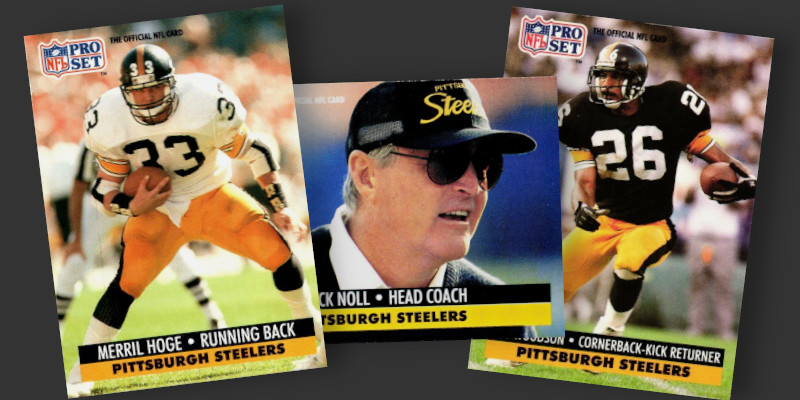
I wasn’t finished “borrowing” my parents’ stamp books. Buoyed by this success, I looked up the addresses of Major League Baseball stadiums and began my first foray into TTM autograph requests. I carefully packaged envelopes with a ton of duplicate 1991 Score cards and sent them to various players I followed in care of their respective teams. Any big name in 1991 was sent a request and a card, and I distinctly remember sending two cards to Tim Raines because I heard a rumor that he liked to keep a card for every one that he signed. I didn’t hear anything back that summer from Raines or anyone else. Another season came and went, and I eventually realized that I was out a bunch of stamps and potential trade bait. I retired my flattop alongside any hopes of getting the cards back and prepared for middle school.
In 1997, coming home from high school, I noticed a vaguely familiar envelope sitting in the family mailbox. An additional stamp had been added to make it past muster with USPS after a 1995 price hike. The letter was postmarked from Evansville, Indiana and was one of the return envelopes I had included with the autograph requests of six years earlier. I had zero clue as to which ball player might live in Indiana, opening this envelope was like opening a pack of cards with a guaranteed hit inside.
I opened the letter and peered inside. Folded up were two sheets of paper. The first was a brief, typed note from Don Mattingly apologizing for the delayed response, expressing hopes I was still at the address on the return envelope, and stating that now that he was retired he had time to go through the backlog of fan mail that had accumulated during his career. The second page was a price list for anything else I might want signed in the future. The most important part of the package was the return of my ’91 Score baseball card, now bearing Mattingly’s autograph in black sharpie.
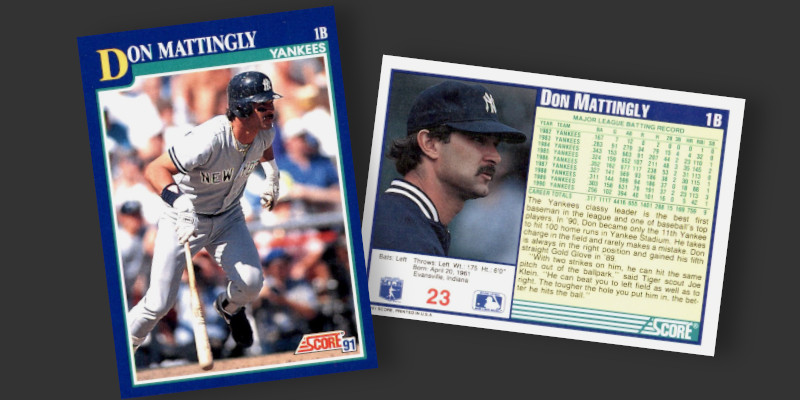
Unfortunately, I do not have the original card or a photograph of it to show. My Mattingly autograph stayed with my collection until I went to college, at which point I sold everything to pay for tuition. What is interesting about the card is the image selection on the front. Mattingly is seen breaking out of the batter’s box in a road game. A worsening back injury eventually cut his career short, and 1990, the season in which this picture was taken, was when it began to impact his performance. In a bit of foreshadowing, it almost looks as if he is using his bat as a cane to run to first base.
Mattingly’s career started off looking like the making of a sure-fire case for the Hall of Fame. Six consecutive All-Star games, a batting title, 9 Gold Gloves, and an MVP award. Now remembered as a high average contact hitter, it is worth mentioning that at one point he also led the American League in slugging (.573 in 1986) while also leading the lead in singles. That is an insane stat right there that gets harder and harder to fathom the more one thinks about it. Mattingly’s name often comes up in the line of succession Yankee greats and for his first five full seasons his stats are right in line with many of them.
Yankees’ First Five Full Seasons
| Player | Seasons | .AVG | HR | RBI | .wOBA | WAR |
|---|---|---|---|---|---|---|
| Mattingly | 1983-1987 | .331 | 123 | 515 | .395 | 25.0 |
| Judge | 2017-2021 | .280 | 154 | 356 | .399 | 24.3 |
| Jeter | 1996-2000 | .323 | 78 | 407 | .381 | 23.5 |
| Gehrig | 1925-1929 | .333 | 145 | 623 | .468 | 39.3 |
| DiMaggio | 1936-1940 | .343 | 168 | 691 | .452 | 36.0 |
| Mantle | 1952-1956 | .313 | 160 | 510 | .440 | 39.5 |
A better player than Aaron Judge and Derek Jeter at that stage of their careers, “Donnie Baseball” just didn’t have the longevity to reach Cooperstown status. Back problems started draining his power numbers in 1990, turning a Manny Ramirez or Duke Snider-like lifetime 140 wRC+ into a pedestrian 102 through the end of his career. I found a few writeups in which authors claim Mattingly could barely scoop up balls at first base in this latter stage of his career, but Bill James’ favorite defensive metric, range factor, shows he may have still been the American League’s best defender of first base through the end of 1994. There’s some mythologizing that goes on with Mattingly’s decline and sometimes it’s worth ignoring the writing and just looking at the numbers on the back of some baseball cards.
Donnie Baseball, indeed.
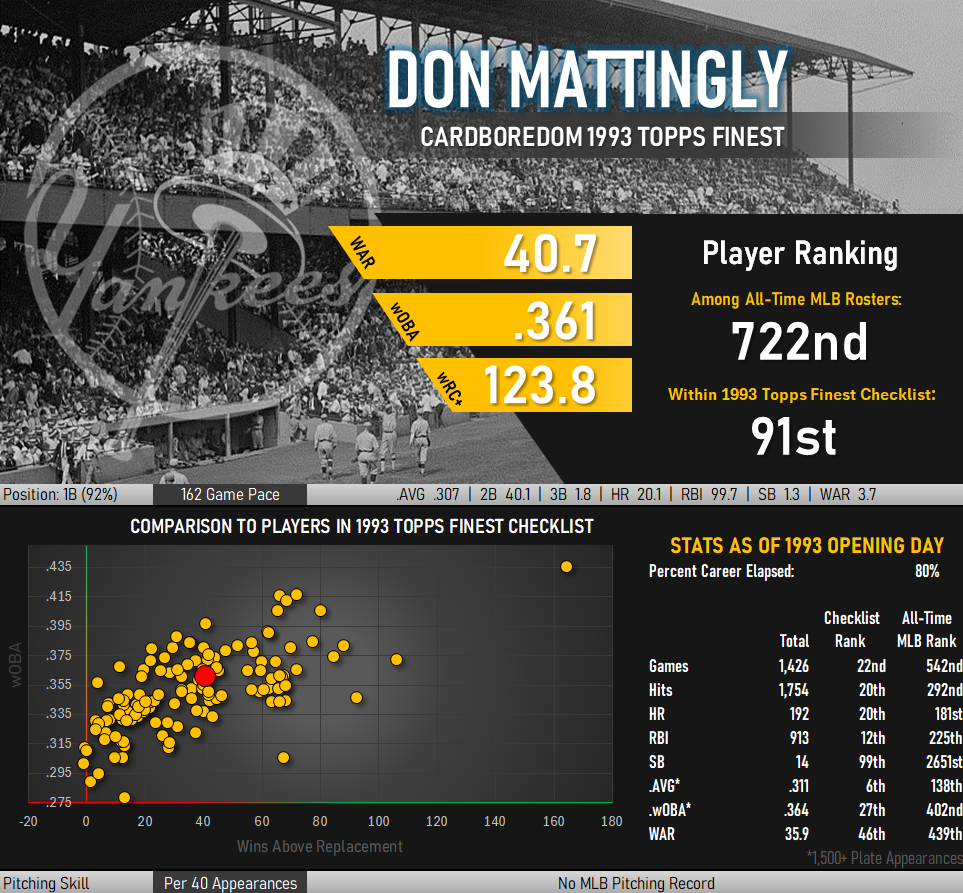
King of Cardboard: Mattingly in 1987
Mattingly was the king of baseball in 1987. He was coming off the ’84 batting title, the ’85 AL MVP, and that crazy ’86 season that saw him lead in both slugging and hitting singles (also leading the league in doubles helped). By 1988 Topps, famously slow in getting ideas to market, had finally seen enough and put his card front and center on wax boxes.
In 1987 Mattingly cemented his reign over the American League. On July 8 he hit a pair of home runs against the Twins. The homestand continued for four games against the White Sox over the next four days, each including an additional homer off Mattingly’s bat. The Yankees went on the road to face the Rangers and Mattingly belted another two homers (and 7 RBIs) in the first game of the series before connecting for solo shots in the next two games. When this barrage ended, he had tied the MLB record with 8 consecutive home run games while also raising his batting average 17 points to .340. Fans had to wonder if they were witnessing the first triple crown in a generation.
Two of Mattingly’s home runs during this stretch would turn out to be record breaking in another way. He hit grand slams on July 10 and 16th, which constituted the third and fourth bases loaded knocks of his season. The first two had come just weeks before, giving him an insane four grand slams in less than 40 days. The final week of the season saw Mattingly embark on another streak, hitting two more grand slams setting a record that still stands for most in a season. Remarkably, these six home runs were the only grand slams he hit across his entire career.
Grand slams are always of interest. The offense needs to get three runners on base, but has to do so in a manner that backs up everyone on the basepaths to set the table for the batter. The first guy has a ton of ways to get on base (e.g. walk, HBP, dropped third strike, error, fielder’s choice, single, double, triple, etc.). The next runner needs to get on base but not drive in the first runner. The third runner has fewer options as they have to get to first base without scoring at least one runner already in scoring position. Having this happen multiple times in a season for the same hitter is even more challenging. Batters are more likely to ground into a double play than hit a home run with Mattingly himself hitting into 7 GDPs against 6 HRs in 163 career bases loaded plate appearances.
All of this Mattingly-centric excitement, coupled with the exploding popularity of baseball cards in the late 1980s, led to this becoming one of the more sought-after cards from that year’s overproduced packs.
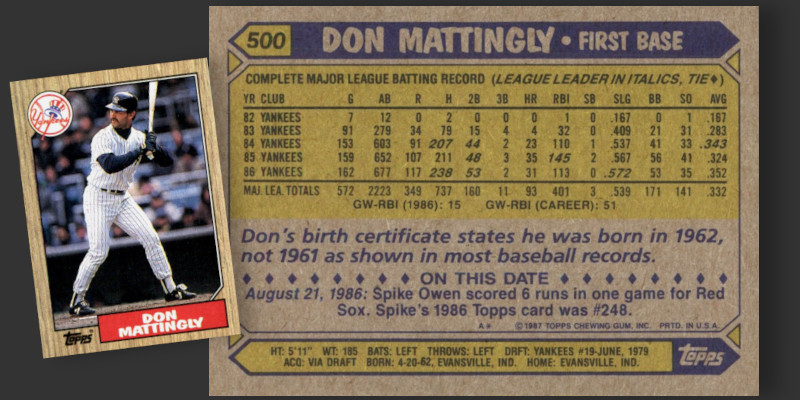
Check out the fun fact below the statistical table on the back: Don’s birth certificate states he was born in 1962, not 1961 as shown in most baseball records. I admit to overlooking this statement on the ’87 Topps Mattingly that had once inhabited my collection, but not everyone missed it. When I was contemplating the creation of CardBoredom I saw Sam Miller’s fantastic article about Mattingly’s birthday mystery appear at ESPN. I bookmarked the story as an example of the kind of writing style and research depths that I hoped at least a few posts would one day get to. I highly recommend opening the link in another tab and getting the full story behind this baseball card. Without spoiling the ending, I will tell you that it involves media guides, the founding detectives of SABR, falsified records, and a whole lot of index cards stored in the basement at Cooperstown.
The Final Refractor Arrives
I waited 5½ years to get a return envelope from Don Mattingly. I spent nearly as long, 4 years, building the 1993 Finest Refractors set. The 199th card arrived at my doorstep in September 2024. The card was a bit tougher to attain than I thought it would be, and early on I certainly would not have identified Mattingly as the most likely to be the final piece of my cardboard puzzle. It wasn’t for a lack of trying.
For starters, I seemed to encounter Mattingly refractors at the same time other cards were available. I often had to make the financially driven decision of acquiring multiple cheaper cards rather than blowing everything on a single name from the checklist. That was the story for the first half of my set building effort, resulting in my walking away from multiple chances for acquiring this card. Later on, I encountered a Mattingly refractor at a card show with an astronomical price tag attached. The seller wasn’t budging from his museum price, and I learned amid growing concern the following year that someone had indeed coughed up his premium price.
I began to get more serious, specifically seeking out a suitable Mattingly card above some of the other needs in my checklist. I found a promising example on eBay from a very self-promotional seller who is moderately well known (possibly infamous?) in collecting circles. We made a deal and within hours he had broken it off, claimed the card was damaged, issued a refund, and relisted and sold the same serial numbered slab to someone else. My eBay use remains minimal in the wake of this and other similar episodes.
The search was once again renewed, and I eventually found a raw, slightly off-center copy. The card was soon secured, sent off to SGC, and now resides as the final piece of my Refractor set.
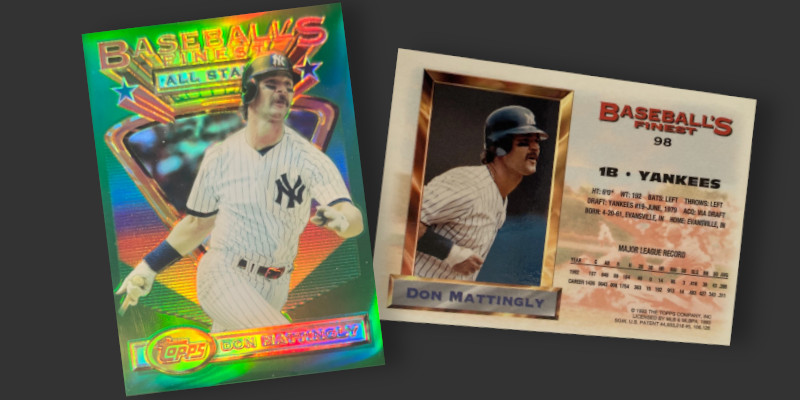
Of interest during the process was the attention being paid to this card by another collector. Conversations with others in the hobby revealed a third party slowly building quite a stash of Mattingly Refractors. A photograph of the collection revealed 7 shiny Mattingly parallels, 8 if one includes the even harder to find promotional sample refractor. This isn’t [yet] at the level I would describe as hoarding, though the existence of so many Mattingly cards in one place was in the back of my mind with every ping of an outbid notice hitting my inbox.
[Side Note: If you’re the owner of those cards your Mattingly collection looks fantastic – truly well done]
The Set Is Finished
From start to finish, completing this set took about 4 years. That’s a pace of roughly one card per week and thoroughly trounces the one card per month pace I originally estimated for this project. An even bigger project has been documenting the whole thing, from recording my purchases to analyzing tens of thousands of data points for insights into the availability of the cards I was seeking. I plan to continue building out my database and publishing information about these cards on a regular basis.
This post represents the 199th and final profile of a card appearing in the ’93 Finest checklist. This seems like just the start of the information I would like to share about these cards and its completion frees up resources for deeper looks at other aspects of collecting these cards. Some collectors have reached out with ideas of things they would like to see, and I am all ears to any suggestions. In early January I intend to push out an expanded version of my (now) annual Refractor Report. Following shortly behind that are looks into the world of unopened Finest materials and the alleged short-prints of the set, complete with a theory that actually matches up with the data rather than relying on anecdotes. Even more is on the way.
I am pausing until January to catch my collecting breath and to allow for the introduction of the set collecting goal that will be taking the place of my Refractor chase. In November and December, I want to introduce you to some cards that are nearly twice my age. I can’t let my cards get boring.
